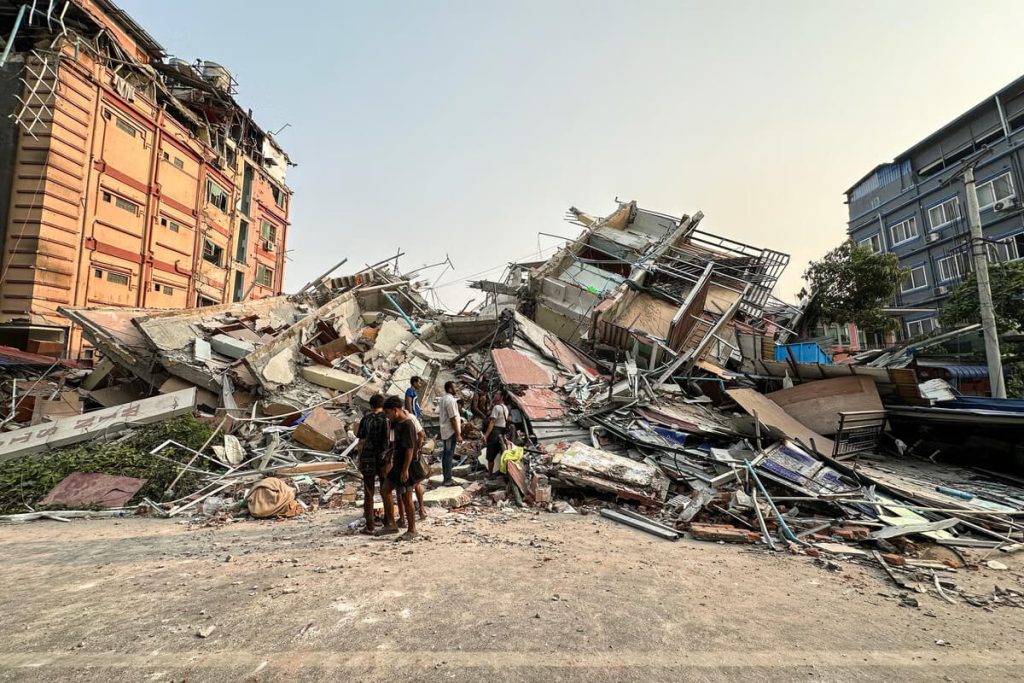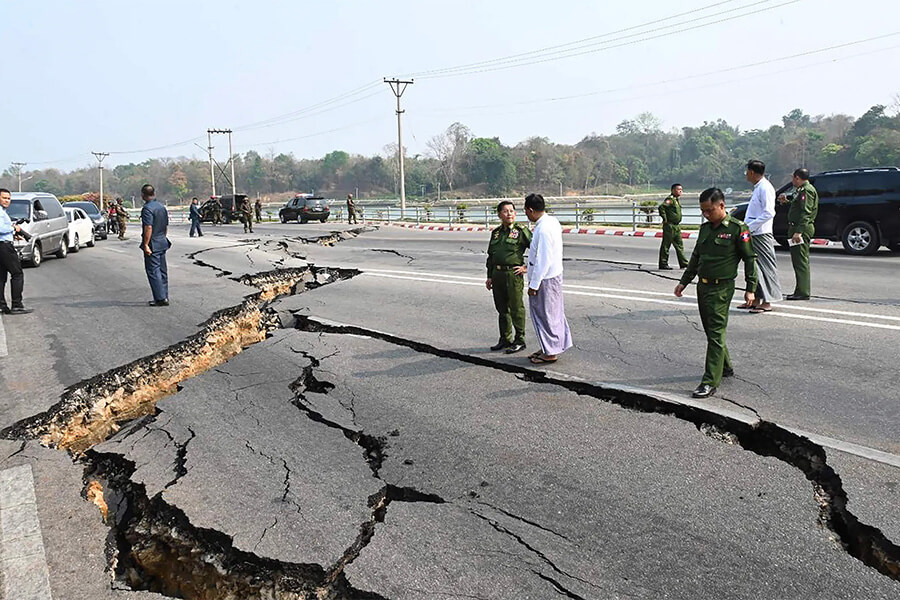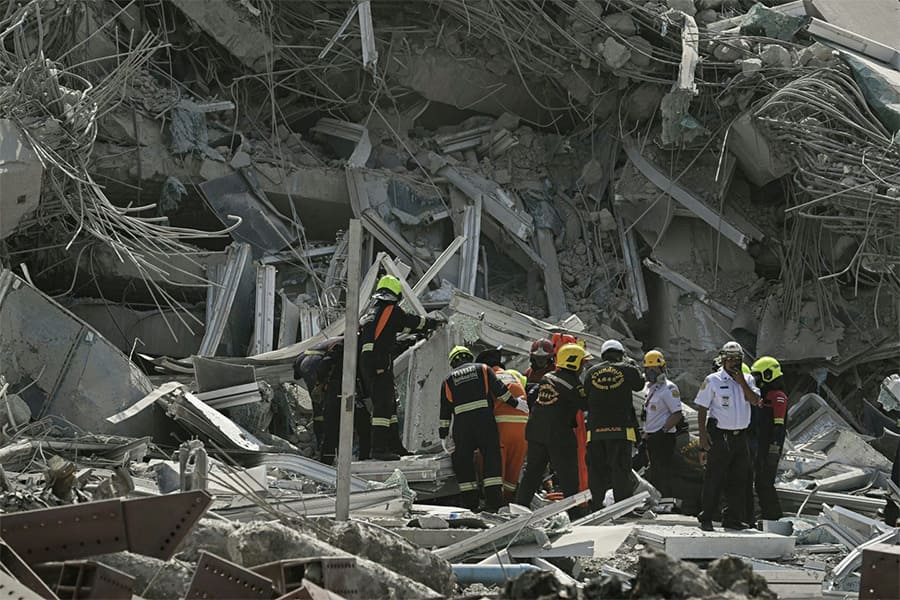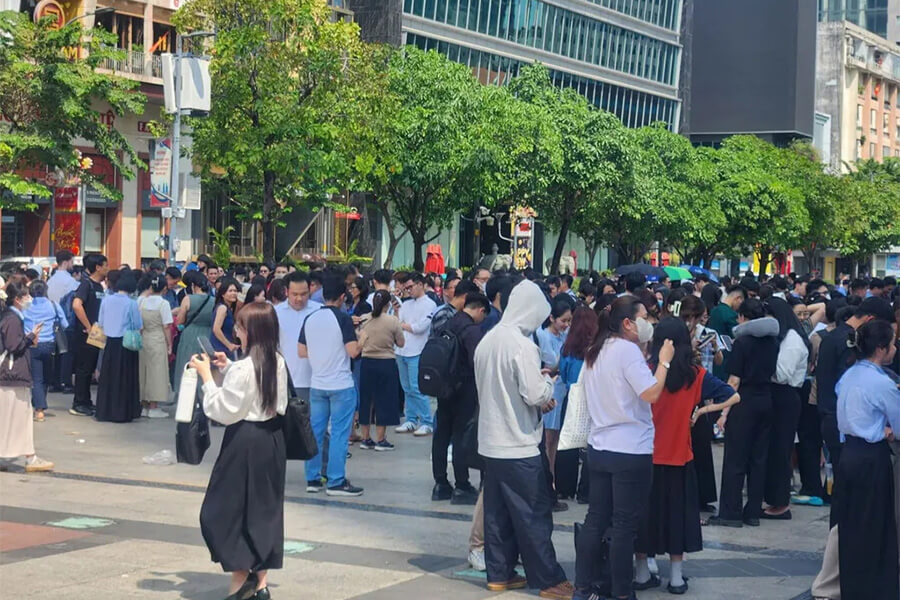March 28, 2025, a 7.7-magnitude earthquake struck central Myanmar, with its epicenter near Sagaing, approximately 17 km northwest of Mandalay. The earthquake caused extensive damage and loss of life not only in Myanmar but also in neighboring countries such as Thailand and Vietnam. The tremors were felt across a vast region, disrupting infrastructure, displacing thousands, and triggering emergency responses on a massive scale.
Myanmar Earthquake Devastation
The powerful 7.7-magnitude earthquake that shook central Myanmar left a trail of devastation in its wake, causing widespread destruction and significant loss of life. Official reports confirm that at least 144 people lost their lives, while 732 others sustained injuries, many of whom were critically wounded due to collapsing buildings and infrastructure failures. The tremors toppled residential and commercial structures, leaving many trapped under rubble as rescue teams rushed to save survivors.
Among the most severely impacted areas was Sagaing, where the quake caused a major bridge to collapse, disrupting transport routes and isolating certain communities. Additionally, Myanmar’s cultural heritage suffered, with the Mandalay Palace sustaining partial destruction, raising concerns about the preservation of the country’s historical landmarks. In the aftermath of the catastrophe, the Myanmar government declared a state of emergency and issued an urgent appeal for international aid to assist in rescue, recovery, and rebuilding efforts.
Search and rescue operations remain ongoing, with emergency responders, volunteers, and international aid groups working tirelessly to clear debris, provide medical assistance, and relocate displaced residents. However, the damage assessment is still incomplete, and officials warn that the death toll may rise as teams reach previously inaccessible areas.
Seismic Impact in Thailand
The powerful tremors from the Myanmar earthquake were strongly felt in Thailand, particularly in Bangkok, where the seismic activity led to the collapse of a high-rise building, leaving dozens trapped under debris. In a desperate bid to prevent further casualties, the Thai government swiftly declared disaster zones and implemented emergency measures.
The earthquake also disrupted Bangkok’s public transportation system, forcing the government to temporarily suspend railway and subway operations to ensure the safety of passengers and workers. Commuters were stranded as authorities inspected infrastructure for damage. Many residents reported feeling prolonged shaking in buildings, with one office worker recounting how their building swayed for more than two minutes, while doors and windows creaked under the pressure of the tremors.
Despite the severity of the situation, civil aviation authorities confirmed that Bangkok’s airports remained operational, providing some relief to those needing to travel or receive emergency supplies. Rescue teams, alongside local authorities, continue to work tirelessly in affected areas, searching for survivors and assessing structural stability.
Tremors Felt Across Vietnam
The effects of the Myanmar earthquake extended into Vietnam, where tremors were felt in multiple regions, including Hanoi, Ho Chi Minh City, and Binh Duong. Though the shaking did not cause significant structural damage, it sent shockwaves of panic through residents, particularly those in high-rise buildings.
Le Hung, who lives on the 19th floor of a building in Hanoi’s Nam Tu Liem District, described how trees on his balcony trembled for more than 10 seconds, emphasizing the intensity of the tremors even at great distances from the epicenter. Meanwhile, in Ho Chi Minh City, the earthquake triggered panic among office workers, many of whom rushed down staircases in fear as their buildings swayed unexpectedly.
"I suddenly noticed a slight tremor around 1:30 p.m.," said Nguyen Huy, an employee working on the 23rd floor of a building in District 10. "People became anxious and evacuated quickly, not knowing if the shaking would intensify."
Although the tremors were alarming, Vietnamese authorities reassured the public that the earthquake was unlikely to cause significant damage within the country. According to Nguyen Xuan Anh, Director of the Institute of Geophysics at the Vietnam Academy of Science and Technology, aftershocks are expected, but Vietnam remains relatively safe from major destruction due to its distance from the earthquake’s epicenter.
International support
In the aftermath of the devastating 7.7-magnitude earthquake that struck Myanmar on March 28, 2025, international organizations have swiftly mobilized to provide aid and support to the affected regions. The United Nations (UN) has allocated $5 million for humanitarian assistance to support recovery efforts in Myanmar.
Additionally, Oxfam America has launched an emergency appeal to gather funds for relief operations, focusing on delivering essential supplies and services to impacted communities.
The International Fund for Animal Welfare (IFAW) is also responding by providing aid, particularly addressing the needs of animals affected by the disaster.
Furthermore, Project HOPE is mobilizing an emergency response to address urgent humanitarian needs arising from the earthquake.
These collective efforts underscore the global community's commitment to assisting Myanmar during this critical time.




